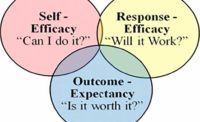Seek and you shall get feedback
So how do we increase the willingness to give and take safety feedback? I suggest starting by consistently asking others what they think of our own safety performance.
When you ask someone for feedback and show appreciation when it’s given, you boost the likelihood that your own advice will be accepted when given to that other person. Show a desire to improve your own performance through feedback and you teach others by example. If you ask questions that direct the observer to give specific, timely, appropriate, and real feedback, you are teaching an excellent tool for safety improvement.
Don't "fish" around
Merely asking "How did I do?" after performing a certain job assures timely advice, but the reaction you get might not be specific enough.In fact, this kind of question might come off as though you’re "fishing" for a compliment -especially if your performance was pretty good, which is usually the case when a person asks for feedback.
It’s quite rare for people to ask for feedback when they know their performance was inferior or below average. Ironically, this is when feedback is most instructive. But if you don’t ask for specific details, it’s possible you’ll never learn how to improve. Another barrier to getting better is that your friends and co-workers are most reluctant to offer advice when it’s really most needed. They don’t want to hurt your feelings.
My advice is to ask for feedback often, and in such a way that it invites correction. Begin by asking for comments after you’ve done something well. Then show sincere appreciation for what you hear. This allows friends and co-workers to build up your "emotional bank account," making it easier for them to make "withdrawals" when you ask for feedback following a below-average performance.
But as I mentioned, be careful when you start out asking for comments about good performance, or you risk appearing insincere. One way around this is to use a ten-point rating scale. After you ask, "How did I do?" follow up with -"Please, give my performance a rating from one to ten, with one being completely inadequate and ten being perfect." This opens the door for specific feedback. People might give you an "8" or "9," even "9.5," but probably not a perfect "10." So now you ask, "What can I do to come closer to a 10?"
Since you’ve already received a fairly high rating, it’s easier for your friend or co-worker to follow up with some corrective feedback to help you reach your goal. And here’s another benefit of using this system: Perhaps you’ll convince your friend to be a more careful observer of your performance next time, in order to help you achieve that "perfect 10." Overall, this interpersonal communication cultivates the kind of interdependency that enables ongoing continuous improvement.
The extra edge
Feedback gives us the insight we need to take performance to a higher level. You see, some of our behavior is naturally followed by consequences we can use to better ourselves. When we hammer a nail, type a word, shoot a basketball, or organize our work area, we observe natural consequences that give us feedback about how we did. But even in these situations an observer could give us specific advice that helps us get from a "9" to a "10" on that rating scale. We might put the basketball in the hoop or hit the nail on the head, but a careful and knowledgeable observer can tell us about our form in a way that improves our accuracy or reduces the probability of a cumulative trauma disorder like carpal tunnel syndrome. But again, we’ll only get this precise and invaluable feedback if we invite others to observe us, and then show genuine interest in hearing what they have to say.So many everyday behaviors go unaccounted for; nothing is said about them, yet they add up. Ultimately, they contribute to safety records, or just how we perceive someone. Reflect for a moment on how simple behaviors- a limp "fish" or crushing "Superman" handshake -influence our positive or negative perception of people. Yet if we never learn what they really think, we go on repeating potentially detrimental behavior.
This can be particularly damaging when it comes to safety. Think about the numerous safety-related behaviors we perform everyday without any feedback. Usually the environment does not give us natural feedback in this regard. Careful observers could tell us how to make small adjustments to reduce the possibility of an injury. But just as you’re reluctant to give others personal advice about something like their handshake, people are apt to feel uncomfortable making specific suggestions about a co-worker’s risky behavior.
So take it upon yourself to open up the lines of communication. Ask others for specific feedback about your own safety performance. But don’t settle for generalities like, "You did fine." Shoot for specifics. Show you’re really serious about safe work habits. It’s likely you’ll learn something yourself, and you’ll teach others the value of feedback -one step in improving overall workplace safety.
Looking for a reprint of this article?
From high-res PDFs to custom plaques, order your copy today!





